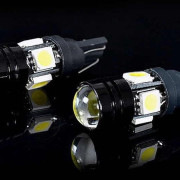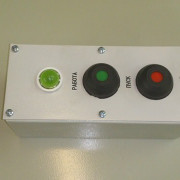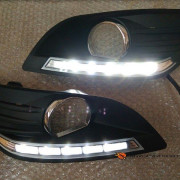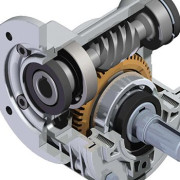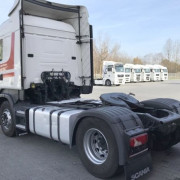Toyota prius — тойота приус 2018 toyota
Содержание:
- Предварительные цены и дата выхода пятого поколения
- Тест-драйв Toyota Prius. Вся правда о гибридном автомобиле
- Gas milage
- Технические характеристики
- Safety & Infotainment Tech
- Overview
- Two Cars, One Platform
- Внешний вид
- Особенности, цена и дизайн
- Двигатель и Трансмиссия
- 2020 Toyota Prius: Love It or Hate It?
- The Value Choice = The Valued Choice
Предварительные цены и дата выхода пятого поколения
Эксперты ожидают появления нового Toyota Prius в его серийной версии весной 2023 года. Сразу должна дебютировать и версия PHV, для которой, по слухам, готовится улучшенная никель-металлогидридная система накопления энергии. Для подключаемого гибридного варианта Prius 2021 год был рекордным по продажам, а год текущий обещает быть не хуже, поэтому такая версия может стать самой любопытной в плане оснащения и набора допопций.
Салон “четвертого” Приуса.
Что же касается стоимости новинки, то японские «осведомители» обещают ориентировочную стартовую цену на уровне 26 тысяч долларов, что всего на 1000 долларов больше, чем у нынешнего Toyota Prius 2022 модельного года. Соответственно, при сохранении прежних модификаций предварительный прайс-лист на новую линейку машин может выглядеть так:
- 2023 Prius L Eco – $26 тысяч,
- 2023 Prius LE – $27 тысяч,
- 2023 Prius XLE – $30,2 тысячи;
- 2023 Prius Nightshade Edition FWD – $30,4 тысячи;
- Prius Limited 2023 года – $34,2 тысячи.
Тест-драйв Toyota Prius. Вся правда о гибридном автомобиле
Toyota Prius 20
На предыдущем моем Prius при пробеге около 100 тыс. км менял передние колодки – 1200 руб. за комплект и 300 руб. за замену. Мне это сделали по пути в Нижний Новгород, когда старые внезапно заскрипели. Примерно так. Еще могу про кузовщину «докинуть».
На предыдущем своем Prius 11 попал в небольшую аварию, пришлось менять капот. Взял его за 5 тыс. руб. на «разборке». Тогда, два года назад, эта запчасть была в одном экземпляре на всю Москву. Сейчас таких проблем уже нет. Совсем.
На новогодние праздники планирую поехать в Австрию, покататься на «доске». Предварительно заеду в сервис: кажется, рычаги в передней подвеске «помирают», ну и колодки пусть глянут, пробегу уже тысяч 150.
Колодки задние вечные, передние ходят очень долго. Про умирающую батарею – сказки, они у первых Prius своей смертью начали умирать только сейчас. Ремонт недорогой, всю менять не обязательно – меняются отдельные элементы, по 1,5-3 тыс. руб. Новая стоит 60 тыс. руб., если покупать самому.
– Александр, можно ли считать Toyota Prius автомобилем на каждый день?
– Конечно! Toyota Prius – вполне комфортный автомобиль, не доставляющий головной боли.
Прогревается на ходу за 10 минут. «Кушает» по городу («газ в пол» и пробки): летом – 6 литров, зимой – 8. По трассе – смотря как едешь: 140-150 км/ч – 6,5 л, в потоке на скорости 90-110 – меньше «пятерки». Бензин заливаю 92-95 по настроению, разницы нет. И главное, автомобиль не ломается.
Немножко теории
Так в чем же инновационность автомобиля Toyota Prius? Только ли в гибридной силовой установке? Не только. Основные агрегаты автомобиля – мотор и коробка передач – в Toyota Prius не совсем обычные: двигатель работает по циклу Аткинсона, а КПП имеет так называемую планетарную структуру.
Основное отличие двигателя, работающего по циклу Аткинсона, от ДВС, работающего по классическому циклу Отто, – другие фазы газораспределения: 3-й такт впуска значительно длиннее, клапан закрывается на половине пути поршня к верхней мертвой точке, то есть когда в цикле Отто уже происходит такт сжатия. Кроме того, двигатель Аткинсона получил специальный коленвал со смещенными точками крепления, что позволило снизить потери на трении и поднять степень сжатия мотора до 13:1. В целом цикл Аткинсона эффективнее цикла Отто более чем на 10%. Однако такой тип двигателя способен хорошо работать лишь на высоких оборотах, на малых мощностные показатели подают. Поэтому данный силовой агрегат отлично сочетается с электромотором, который компенсирует нехватку тяги на «низах».
Коробка передач в Toyota Prius – планетарная: механическая система, состоящая из нескольких планетарных зубчатых колес (шестерен), вращающихся вокруг центральной солнечной шестерни. Такой тип коробки передач более компактен и обеспечивает быстрое и плавное переключение скоростей без потери мощности, в отличие от обычной АКПП с гидротрансформатором. Планетарные передачи отличаются долговечностью, так как нагрузка передается сразу несколькими сателлитами, что снижает напряжение зубьев. По субъективным ощущениям, такой тип коробки передач похож на вариатор – автомобиль разгоняется плавно и без рывков.
Gas milage
The infotainment system may be a flop, but Toyota succeeded where it counts: under the hood. In addition to achieving good gas mileage, the Prius provides a comfortable driving experience that won’t spook first time hybrid drivers. The availability of all-wheel drive is a major bonus for car buyers in snowy regions.
The Prius uses a 1.8-liter four-cylinder engine connected to Toyota’s familiar Hybrid Synergy Drive system. Normally, an electric motor helps the gasoline engine drive the front wheels, but all-wheel drive models add a second motor at the back. It sends power to the rear wheels without any physical connection to the front wheels.
Toyota has used a similar setup in its hybrid crossovers for years. In the Prius, all-wheel drive only kicks in when onboard computers determine that extra traction is needed, and only up to 43 mph. We didn’t notice much of a difference from previous experiences with front-wheel drive Priuses (Prii?), which isn’t surprising given how rarely all-wheel drive is engaged in normal driving.
The Prius provides a normal-feeling driving experience that won’t spook first time hybrid drivers.
With our without all-wheel drive, the Prius is rated at 121 horsepower (Toyota doesn’t list a torque figure). While hybrid buyers probably aren’t looking for horsepower bragging rights, it’s worth noting that the Hyundai Ioniq and Kia Niro both sport 139 hp, while the Honda Insight boasts 151 hp. Acceleration felt adequate, and we were impressed by the seamless transition between gasoline and electric power.
Stephen Edelstein/Digital Trends
The Prius is based on the same Toyota New Global Architecture (TNGA) platform as numerous other Toyota models, including the Camry and Corolla. TNGA really pays dividends for the Prius, giving it a feeling of solidity not normally seen in mass market hybrids.
Toyota also nailed the suspension tuning. This car feels genuinely nimble and fun, although numb steering and low rolling-resistance tires keep it from being truly sporty. Ride quality is good, although the suspension can send disconcerting jolts through the cabin over broken pavement. The brake pedal was also hard to modulate, with the brakes only biting after the pedal was about three quarters of the way to floor.
Gas mileage champ
The main reason to buy a hybrid is fuel economy, and in this area the Prius lives up to the hype. Most front-wheel drive Prius models are rated at 52 mpg combined (54 mpg city, 50 mpg highway), but the L Eco model manages 56 mpg combined (58 mpg city, 53 mpg highway). Those are impressive numbers. However, the competition is catching up.
The Hyundai Ioniq is rated at 58 mpg combined (57 mpg city, 59 mpg highway) in efficiency-focused Blue form, and 55 mpg combined (55 mpg city, 54 mpg highway) in other guises. The Honda Insight also comes close to the Prius, at 52 mpg combined (55 mpg city, 49 mpg highway). Even Toyota’s own Corolla Hybrid is rated at 52 mpg combined (53 mpg city, 52 mpg highway).
All-wheel drive comes with a gas mileage penalty. Our test car was rated at 50 mpg combined (52 mpg city, 48 mpg highway). We averaged 44.5 mpg (according to the car’s trip computer) over mostly highway driving. All-wheel drive usually decreases fuel efficiency, as the extra hardware adds weight, and energy is needed to drive both sets of wheels.
Still, this is currently the best case scenario for snowbound fuel misers. The Prius is the only hybrid car in its price range with all-wheel drive. The only alternative is to get a bigger, less aerodynamic Toyota RAV4 or Ford Escape – with much lower gas mileage.
Технические характеристики
Трансмиссия Toyota Prius состоит из 1,8-литрового четырехцилиндрового двигателя и электродвигателя, которые в совокупности выдают 121 л.с. Авто обладает достаточной мощностью для большинства ситуаций вождения, а переход с электроэнергии на бензин происходит плавно. Двигатель разгоняет Toyota Prius до 100 км/ч целые 9.8 секунд. Бесступенчатая автоматическая коробка передач (CVT) также входит в стандартную комплектацию.
Есть показатель, в котором Toyota Prius вне конкуренции, — это расход топлива. Базовый Prius L Eco тратит 4.3 л/100 км в смешанном цикле. Все остальные варианты с передним приводом расходуют 4.4 л/100 км в городе и 4.7 л/100 км на шоссе, в то время как полноприводные комплектации LE и XLE требуют около 4.6/5.0 л/100 км по городу/шоссе.
Этот гибрид менее привлекателен для вождения, чем некоторые конкуренты, но он все равно нравится покупателям. Prius поставляется с тремя режимами движения: EV, Eco и Power. Критики отмечают, что Eco тихий и эффективный. Режим Power немного улучшает ускорение Toyota Prius, но вызывает гул двигателя через недостаток мощности.
Еще одно преимущество Toyota Prius в технических характеристиках — доступный полный привод. Однако следует отметить, что задние колеса вмешиваются только тогда, когда передние теряют сцепление с дорогой. Таким образом, в большинстве сценариев сухой погоды вы никогда не почувствуете, что они работают.
Safety & Infotainment Tech
In terms of driver assistance tech, the newer Corolla Hybrid features Toyota’s latest Safety Sense 2.0 package. We understand this section is the vegetable of this particular review, important yet unexciting. But it’s really worth noting how much driver assistance kit you get in a $24,000 Corolla these days:
- Automatic forward emergency braking
- Lane departure warning with steering assist
- Automatic high beams
- Traffic sign recognition
- Full-speed adaptive cruise control
- Lane tracing assist
Even in the loaded-out $33,000 Limited trim (the only option is a moonroof), the older Prius makes do with the pared-down Safety Sense P, lacking the Corolla’s traffic sign camera and lane tracing function plus enhancements to existing technologies like low light pedestrian and daytime cyclist detection for the pre-collision alert system. Corolla’s lane departure warning is also more beefed up than in the Prius. Admittedly, the pricier Prius Limited does offer blind spot monitoring, rear cross-traffic alert, and a parking-assist feature, three options you can’t get on the Corolla Hybrid. Down in the mid-$20K range, though, the Corolla beats the Prius on safety tech.
Toyota will be happy to hear that our time in Greensboro didn’t involve any situations in which the true effectiveness of these safety suites had to be put to the test. But for what it’s worth, they never became a nuisance either, which is more than you can say about some touchy auto-braking or lane-keep sensors out there.
2020 Toyota Corolla Hybrid, Toyota
As we’ve said, the Corolla Hybrid is only available in one trim—LE—and there are no options. What you see is what you get. Good thing its newness gives it an edge on the infotainment front; the eight-inch screen is indeed bigger than the seven-incher you get in the majority of Prius models. Those who treat themselves to the $33,000 Prius Limited gets a big, vertical, 11.6-inch contraption that should impress a few passengers, but if you’re comparing an equally-priced Corolla Hybrid LE and a Prius LE, the Corolla wins again. Perplexingly, the front-drive Limited is the one and only Prius model to get that cool screen. Even AWD-e buyers are stuck with the smaller seven-inch system no matter how much cash they’re willing to plunk down.
The Tesla-style tablet is fancy, we’ll give it that, but neither it nor the Prius’ smaller screen are as intuitive to use as the Corolla’s, which is placed higher and closer to the driver’s line of sight and comes with more redundant buttons. At 60 mph, there’s nothing safer than redundancies. Except maybe telepathy. Apple CarPlay and Amazon Alexa integration are standard on both cars and all trims but Android Auto remains conspicuously absent.
Overview
The 2020 Toyota Prius Prime is the plug-in-hybrid member of the Prius family, and the one with the more attractive, more traditional-looking hatchback body style. Aside from aesthetics, the Prime distinguishes itself with 25 miles of electric-only driving range and an EPA-estimated combined rating of 54 mpg. That’s very competitive fuel economy, and it comes at an even more competitive price. As the industry introduces more electric vehicles based on a crossover body style, the hatchback Prius Prime will continue to distinguish itself aesthetically. Unfortunately, it’s also distinguished by apathetic acceleration and unenthusiastic driving responses. Still, for those who want not just a hybrid but a Toyota, this one is the pinnacle of the Prius brand.
Two Cars, One Platform
Boasting 27.4 cubic feet of cargo room over the Corolla’s measly 13.1, we know the Prius and its big, hunched-over greenhouse will carry a lot more stuff. Sure, the Corolla can fold down its rear seats for more room, but then again so can the Prius. Beyond this, the two aren’t dramatically different when you park them side-by-side and bust out the tape measure.
The Corolla is 2.3 inches longer and 0.8 inches wider overall while weighing 25 pounds less. Inside, the Prius’ passenger compartment provides marginally more head and shoulder room than the Corolla’s thanks to it being almost an inch-and-a-half taller overall. However, the Corolla boasts a whole 1.4 inches more rear seat legroom—a death knell for the Prius, if you ask my Asian immigrant parents.
2020 Corolla Hybrid, Toyota
A car’s physical fitment in its owner’s lifestyle often isn’t enough. It’s also got to blend with the driver’s personal style. «When the Prius came out, it was such a concept,» a Toyota rep told us. » are still wanting that concept, that personal branding, the identity of ‘I’m driving an environmentally-friendly vehicle.'» Like the models that came before it, the 2020 Toyota Prius has a bulky backside and funky styling inside and out. Its cabin is made up of round, sci-fi shapes and air vent tabs with «PRIUS» stamped on them. This is a Toyota freakin’ Prius and it wants everybody to know it.
Toyota
The Corolla’s much more conventional look, meanwhile, is all-new for 2020 and much improved inside and out. Like its road manners, which we’ll get to in a minute, its cabin is simple, intuitive, and appealing in a utilitarian sort of way.
On the outside, the sedan’s front end is aggressive but not offensively so. The restrained theme continues to the rest of the car, ending with what just might be one of the only recent sedan rear-ends to be more attractive than its hatchback counterpart, what with its confident, almost Bangle-like trunk lid. Although it doesn’t actually light up, I especially like the continuous bar that connects the taillights and apes a design trend now commonly found in cars of a completely different tax bracket.
Chris Tsui
The Prius isn’t nearly as easy on the eyes. We understand that «odd and experimental» are likely what Prius designers were going for but parked next to the more ordinary Corolla, it just looks awkward. This generation of Prius is now four years old, though did receive a light refresh for the 2019 model year that toned down the visual aggression of its front and rear fascias while retaining the same sheet metal, resulting in a vehicle with a body that doesn’t quite match its face.
Under the skin, both cars are built on Toyota’s New Global Architecture-C platform which would explain why they both share the same 106.3-inch wheelbase. TNGA is Toyota’s modular unibody platform that can be repurposed for a vast number of vehicles, expediting development, cutting costs, and ideally increasing quality. Like a pizza maker who can pair a single recipe of crust with a myriad of sauces and toppings (or, y’know, Volkswagen with its MQB, MLB, and MEB setups), TNGA lets Toyota build a variety of cars with different purposes and characters all on the same basic framework. This C version, in particular, doesn’t just underpin the Corolla and Prius but the CH-R and Lexus UX crossovers as well.
2020 Corolla Hybrid, Toyota
“The same, but different” is also a good way of describing the Prius and Corolla Hybrid’s battery-assisted powertrains. Both cars are powered by a 1.8-liter four-cylinder paired to two electric motors making a combined 121 horsepower and 105 pound-feet of torque. Where they differ is what the batteries are made of. While the newer Corolla Hybrid and Prius AWD-e perplexingly make do with theoretically cheaper and heavier nickel-metal hydride cells, the regular, front-wheel-drive Prius gets newfangled, Michael Scott-approved lithium batteries.
The Drive asked Toyota if there’s any other specific reason for the different battery chemistries, but we’ve yet to receive a response. It’s previously pointed to the nickel pack’s better performance in cold weather as a sticking point.
Внешний вид
А вот теперь о наболевшем. Если по части техники не придраться, то к дизайнерам Toyota много вопросов уже несколько лет подряд. Политика бренда в отношении дизайна для многих автомобилистов как минимум непонятна.
Чего пытается добиться производитель, делая откровенно странные формы, где нет места эстетичности? Даже граненный Кибертрак от Маска кажется более эстетически привлекательным.

Если это игра в футуризм, так почему не идти до конца? Вместо этого, пытаясь усидеть на двух стульях, Тойота предлагает совершенно непонятный продукт.
Вот что это за стык на переднем крыле со стеклом, зачем такой огромный перепад высоты на корме, что это за странное заднее стекло, габариты и острые грани на задних крыльях?

В общем, как и прежде, Toyota Prius опять будет искать любителей таких изысков. Остальные будут покупать только технические характеристики и лишний раз стараться не смотреть на кузов.
Особенности, цена и дизайн
Prius Prime 2020 года выпускается в трех комплектациях — LE, XLE и Limited — все с 1,8-литровым 4-цилиндровым двигателем мощностью 95 лошадиных сил и электродвигателем, которые в совокупности вырабатывают 121 л.с. Аккумулятор емкостью 8,8 кВтч заряжается через гибридную систему и рекуперативное торможение или путем подключения к розетке. Полная зарядка аккумулятора занимает 5,5 часов с помощью прилагаемого шнура на 120 В или чуть более двух часов с помощью зарядного устройства уровня 2 на 240 В. Мощность передается на переднее колесо через бесступенчатую автоматическую коробку передач.
Базовая версия LE начинается с 27900 долларов и поставляется со стандартными внешними функциями, включая 15-дюймовые легкосплавные диски, армированный углеродным волокном задний люк, прерывистые дворники, обогреваемые и складывающиеся боковые зеркала, освещенную дверцу порта зарядки с индикатором заряда и светодиоды. фары, задние фонари и дневные ходовые огни.
Стандартные внутренние удобства включают автоматический климат-контроль, вход без ключа для двери водителя, запуск с помощью кнопки, наклонно-телескопическое рулевое колесо, тканевые сиденья, передние сиденья с подогревом, складывающиеся задние сиденья 60/40, а также электрические стеклоподъемники и двери.
Стандартные технические функции включают резервную камеру, настраиваемую 4,2-дюймовую приборную панель в центре приборной панели, аудиосистему с шестью динамиками AM / FM / SiriusXM / CD-плеера, порт USB-носителя и два порта USB для зарядки, а также Bluetooth для телефон с громкой связью и потоковая передача музыки. Информационно-развлекательный интерфейс с 7-дюймовым сенсорным экраном поддерживает совместимость с Apple CarPlay и Amazon Alexa, GPS-навигацию Scout на основе приложений, Siri Eyes Free, распознавание голоса и подключаемые службы Toyota, включая телематику Safety Connect и Wi-Fi в салоне.
Система Toyota Safety Sense P входит в стандартную комплектацию и включает предупреждение о лобовом столкновении с автоматическим экстренным торможением и обнаружением пешеходов, предупреждение и помощь при выезде с полосы движения, автоматический дальний свет, помощь при трогании с холма и адаптивный круиз-контроль.
XLE отделка, которая начинается с 29800 долларов, добавляет сиденье водителя с электроприводом, обивку из искусственной кожи, бесключевой доступ во все двери, беспроводную зарядку смартфона, буферизацию AM / FM-радио, HD-радио с информацией о дорожном движении и погоде в реальном времени, 11,6-дюймовый сенсорный экран и приложение для смартфона с функциями удаленного управления зарядкой, климат-контролем, зарядной станцией и поиском автомобиля. С несколькими автономными опциями, такими как багажник на крышу, и платой за доставку, обработку и погрузку-разгрузку в размере 930 долларов, окончательная цена нашего тестового автомобиля составила 36 031 доллар.
Переходя к комплектации Limited, которая начинается в 33 500 долларов США добавляет противотуманные и акцентные фары, дворники с датчиком дождя, зеркало заднего вида с автоматическим затемнением и приемопередатчик HomeLink, аудиосистему премиум-класса JBL с 10 динамиками, мониторинг слепых зон с предупреждением о перекрестном движении сзади, подогрев рулевого колеса, головку дисплей, парктроник и полуавтоматическая парковка.
В то время как автомобильная промышленность все больше удовлетворяет аппетит публики к кроссоверам, Prius Prime сохраняет наследие своих задних люков. Редизайн Prius четвертого поколения, дебютировавший в 2016 году, придает автомобилю более похожий на седан вид, но с удобством хэтчбека.
Заднее грузовое пространство Prime сокращено из-за батареи, хранящейся под ним, поэтому он обеспечивает значительно меньше места, чем стандартный Prius и некоторые его конкуренты. В остальном интерьер Prime похож на другие модели Prius, просторный, но утилитарный, с комбинацией приборов в центре приборной панели.
Двигатель и Трансмиссия
Центральным элементом Prius 2020 года является 1,8-литровый четырехцилиндровый бензиновый двигатель и два мотора-генератора, соединенные с электронным управлением планетарного типа CVT. Тормозной системой Toyota управляет электронная тормозная система Toyota, которая координирует между рекуперативным торможением и гидравлическими тормозами автомобиля. Это и останавливает вас, и немного разряжает батареи.
В моделях с передним приводом используется литий-ионный аккумулятор, а в версиях AWD-e — никель-металлогидридный аккумулятор. Toyota пошла по этому пути, поскольку никель-металлогидридные батареи по своей природе устойчивы к экстремальным изменениям температуры. Другими словами, Toyota ожидает покупателей полного привода, которые живут в холодную погоду. Говоря о холодной погоде, XLE (и FWD и AWD-e) является стандартным с подогревом передних сидений. Способ думать о ваших клиентах в Миннесоте!
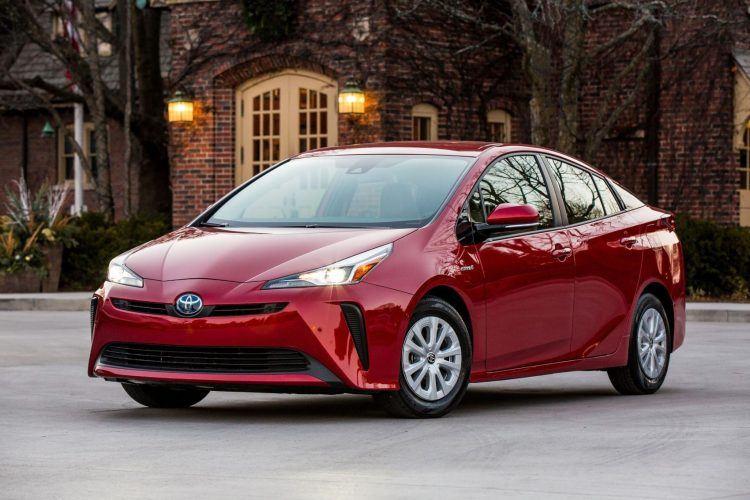 Лазерная сварка винтом и специальные клеи обеспечивают более прочный корпус для Prius 2020 года. Фото: Toyota Motor Sales, США, Inc.
Лазерная сварка винтом и специальные клеи обеспечивают более прочный корпус для Prius 2020 года. Фото: Toyota Motor Sales, США, Inc.
2020 Toyota Prius: Love It or Hate It?
Look, I get it. A lot of gearheads hate this car. They lump Prius drivers into one big terrible category. The styling is questionable (at best). The performance is, well, leisurely. But that also overlooks the stone cold fact the Toyota’s Prius is a technological marvel. The hybrid layout plays to the strengths of both on-board drive systems. The ICE engine handles the long-running, highway stretches where revs are constant for hours (the spot on the map where EVs are terrible). By contrast, the electric drivetrain handles the around town, constant revving up and down where it is strongest.
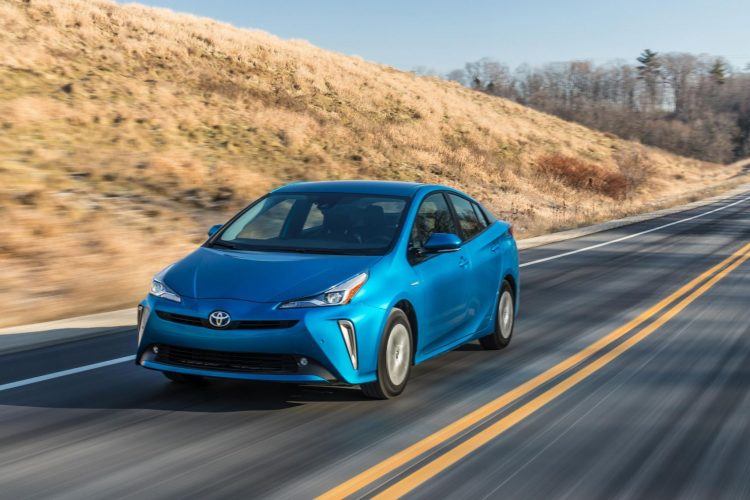 2020 Toyota Prius. Photo: Toyota Motor Sales, U.S.A., Inc.
2020 Toyota Prius. Photo: Toyota Motor Sales, U.S.A., Inc.
The Value Choice = The Valued Choice
It used to be that if you wanted a small, inexpensive Toyota sedan that’d routinely exceed 50 mpg, you’d get a Prius. With the introduction of the pragmatically excellent Corolla Hybrid, however, you’ve got choices. The Prius’ big trunk and leafy image will always have its audience, and you can obviously spend more money on the $33K Limited and get a more tricked-out ride. But for us, the Corolla’s far superior driving manners, more conventional user experience, better ADAS tech, and more palatable styling make it the clear winner, doubly so when you stack it against a closer-priced, lower-trim Prius.
Toyota
The Prius AWD-e may be tempting in colder climates, but you’ll pay a $1,400 upcharge on the Prius LE for the privilege—and remember, that’ll be over $3,400 more expensive than the equivalent FWD Corolla Hybrid LE. This Canadian’s wisdom holds that money is better spent on a good set of winter tires anyway.
Starting at $1,100 less than the cheapest Prius and delivering the exact same overall fuel economy, the Corolla is the one we’d buy. Unless we hated fun driving and routinely needed to ferry around 27.4 cubic feet of widgets or coal or whatever. The 2020 Toyota Corolla Hybrid’s combination of efficiency, Toyota reliability, and genuinely amusing handling makes it worthy of a serious look not just for those shopping for a hybrid, but anyone looking for a decent compact car, period.
Chris Tsui

